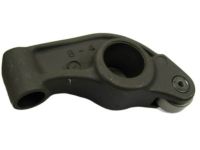Broken valve springs and defective valve stem seals can be replaced without removing the cylinder heads, typically requiring two special tools and a compressed air source. Begin by removing the valve cover and the spark plug from the affected cylinder, or all spark plugs if replacing all valve stem seals. Turn the crankshaft until the piston in the affected cylinder is at top dead center on the compression stroke, and if replacing all seals, start with cylinder number one, working through the firing order. Thread an adapter into the spark plug hole and connect an air hose from a compressed air source; many auto parts stores supply the necessary adapter. Remove the rocker arms and apply compressed air to the cylinder. Stuff clean shop rags into the cylinder head holes above and below the valves to prevent parts and tools from falling into the engine, then use a valve spring compressor to compress the spring and remove the keepers with small needle-nose pliers or a magnet. Remove the spring retainer and valve spring, then take out the valve guide seal/spring seat assembly, being cautious that if air pressure fails to hold the valve closed, the valve face or seat may be damaged, necessitating cylinder head removal for further repairs. Wrap a rubber band or tape around the top of the valve stem to prevent it from falling into the combustion chamber, then release the air pressure. Inspect the valve stem for damage, ensuring it rotates freely in the guide without binding; if it does bind, the valve may be bent or the guide damaged, requiring head removal for repair. Pull up on the valve stem to close it, reapply air pressure to retain it in the closed position, and then remove the tape or rubber band. Lubricate the valve stem with engine oil and install a new valve guide seal/spring seat assembly, tapping it into place with a deep socket. Position the spring over the valve, install the valve spring retainer, compress the spring, and carefully position the keepers in the groove, applying a small dab of grease to hold them if necessary. Remove the pressure from the spring tool and ensure the keepers are seated, then disconnect the air hose and remove the adapter from the spark plug hole. If applicable, install the spark plug tubes for 2.0L engines, followed by the rocker arms, spark plug(s), and wire(s). Finally, install the valve cover, start the engine, and check for oil leaks and unusual sounds from the valve cover area.
Posted by MoparPartsGiant Specialist 










